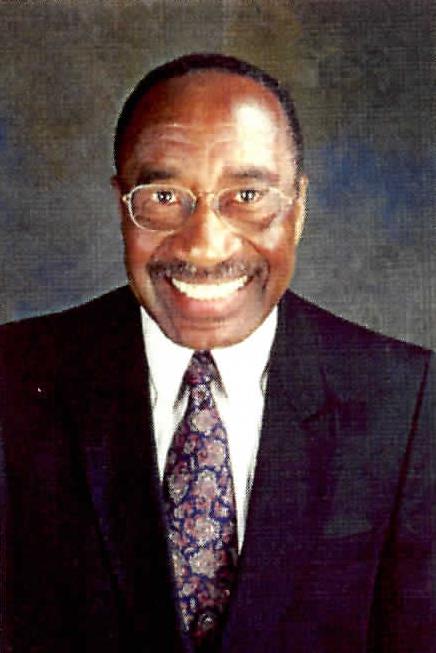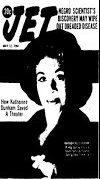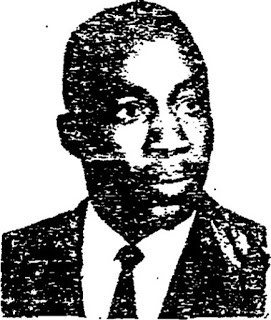Clarence H. Seniors

Clarence H. Seniors
Chairman, Clarsen Investment Research
Born August 26, 1936.
Mr. Seniors has more than 44 years of Investment Banking experience as an analyst of banks, insurance, industrial corporations and non-bank financial institutions incorporating both the “buy and sell” side of the business. He left radical political activism for Wall Street in the late 1960s.
Before establishing his own company, Clarsen Investment Research, in 1987, he began his career with Bache & Co (later Prudential Securities). He also held senior management positions at a number of leading financial institutions including Standard and Poor’s and served as Managing Director of Siebert Capital Markets.
He is the editor and publisher of a weekly market letter with a stress on economic activity, money and the capital markets. Mr. Seniors has experience in both the equity and fixed income areas of the investment process. The fixed income component emphasizes the due diligence criterion he implemented while at Standard and Poor’s.
Mr. Seniors is involved in community activities, supporting a number of arts and educational institutions. He has served on the boards of Bloomfield College, the Montclair Arts Museum and Aljira Community of the Arts. In 1989, Mr. Seniors was named Honorary Chairman of the Martin Luther King Scholarship Committee in Montclair, New Jersey.
Active in the 1960’s Civil Rights Movement
Clarence Seniors participated in the Tuskegee and Atlanta struggles and was a founding member of the group which established SNCC under Ella Baker’s stewardship. He was a frequent visitor at the Highlander Folk School as a lecturer and workshop leader.

Clarence Seniors is to the right of SNCC founder, Ella Baker, with Miles Horton far left the director and Septima Clark, the Education director, third left.
The Highlander Folk School played a critical role in the Movement as well as Mr. Seniors’ development. It trained civil rights leader Rosa Parks prior to her historic role in the Montgomery Bus Boycott, as well as providing training for many other movement activists, primarily Fisk University Students who played a pivotal in the Student Nonviolent Coordinating Committee (SNCC) in the mid- and-late 1950s. A popular attendee was Dr. Martin Luther King, Jr. (Reference: John M. Glen, Highlander: No Ordinary School, 1932-1962. The University Press of Kentucky, 1988. ISBN 0-8131-1617-1
When Septima Clark was honored as Woman of the Year in 1958 by the Harlem Utility Club, a civic service, she informed Louise Fisher Morris, the president that she would not accept unless her associate Clarence H. Seniors would also be honored and be seated on the dais next to her. The honor was bestowed on him and he was given a college scholarship to attend Morris Brown College. (Charron, Katherine M. Freedom’s Teacher: The Life of Septima Clark. Chapel Hill: University of North Carolina Pr, 2012. Internet resource).
Clarence H. Senior’s Civil Rights Arrest Record
Clarence H. Seniors was arrested on numerous occasions in Atlanta during the civil rights sit in demonstrations according to the “Atlanta Constitution articles and duly confirmed by FBI investigation files. \
Long before Lonnie King and Julian Bond became active in the Atlanta Sit-In Movement, Mr. Seniors. a student at Morehouse College, began to sit-in at the Atlanta Central Public library conferring with AU’s Dean Whitney Young, Mathematics Professors, Dr. Bill Houston, Dr. Howard Zinn, the Quakers, Dr. Lonnie Cross (his mentor), as well as white liberal “fellow travelers” on the faculty at Morehouse, Spellman College and Atlanta university.
Mr. Seniors was the second African American to obtain a library card on May 19, 1959, after the first black mayor, Maynard Jackson’s mother, Irene Dobbs Jackson, a professor at Spellman College, was invited to join (https: /scholarblogs.emory.edu/woodruff/fee/john-Wesley-Dobbs.). This prominent African American family was considered part of the Black Bourgeoisie.
When Mr. Seniors visited the library, he was always met at the door by an official, who guided him to a separate reading room and provided him with a very helpful special assistant. If he had forgotten his library card he was allowed to check out books using his Morehouse ID. As he exited the library, a plain clothed police officer took charge and followed him back to the campus. The police officer took his hand when he got out of his car and escorted him to the office of the Dean and he received a reprimand.
Accompanied by Morehouse College Mathematics Professor William Houston, in 1958 Mr. Seniors was among two other Morehouse Students “who came knocking,” attempting to enroll at Atlanta’s Georgia Tech the first institution of higher education in the Deep South to integrate peacefully in 1961 without a court order.
Mr. Seniors was not allowed to continue as a student at Morehouse because, as was stated, “his associations and questionable activities both on and off the campus.” The dismissal was sparked by his passing out a protest document when the African Leader Tom Mboya, of Kenya, was invited to the university when he was raising money to sponsor students from Kenya to attend Black colleges in America. The protest “Open Letter to Tom Mboya” was concerned with Mboya’s strong connections to the CIA. (Tom Mboya – Foreign agents link in Mboya assassination (source)www.tommboya.org/…/110-foreign-agents-link-in-mboya-assassination)
Seeking to get back into Morehouse College, Mr. Seniors retained Conrad Joseph Lynn, the outstanding African-American civil rights lawyer and activist known for providing legal representation for defendants such as Robert F. Williams of the Monroe, North Carolina “Negroes of Guns Movement” (Lynn writes about Williams’ and Mae Mallory’s struggles in There Is a Fountain: The Autobiography of Conrad Lynn. Brooklyn, N.Y: Lawrence Hill Books, 1993. Print).
Mr. Seniors was a protégée of, the civil libertarian, Dr. Lonnie Cross, Chair of Atlanta University’s Math Department, who in protest with respect to his dismissal from Morehouse, allowed Seniors to take all graduate classes.
Dr. Cross introduced Clarence to Julian Bond’s father, Dr. Horace Man Bond (AU’s Dean of Education School and past president of Lincoln University and two other HBCUs). Dr. Bond took Clarence on as a student assistant when he was doing research on African American doctorates, using Mr. Seniors’ extensive bibliography on Black history books, research papers and scholarly articles on Black PhDs. Dr. Horace Mann Bond is highly recognized as an esteemed educator, American historian and social science researcher. One of his most famous books is The Education of the Negro in the American Social Order...
Dr. Cross supervised the first of the sit-ins, which used as their target the fancy Magnolia Dining Room at Rich’s Department Store, the largest department store in Atlanta. The owner of Rich’s had established a close relationship with the Wealthy Black Bourgeoisie Clients of Atlanta – inviting them on special occasions – after shopping hours –to the Magnolia Room, giving them special, “separate but equal buying privileges” – treating them better than regular black customers. That group spent large sums of money on merchandise at the store.
When Lonnie King and Julian Bond began to organize the Atlanta Student Movement they stated that they were told by the FBI that the group should avoid having an association with Clarence H. Seniors. Nonetheless, when AU’s President Rufus Clement called the group together and took charge in writing “the Committee on Appeal for Human Rights,” Mr. Seniors was invited to participate in the deliberations and was allowed to continue to participate in all of the demonstrations.
Working closely with the Atlanta university students was Ella Baker who felt the SCLC and CORE should join the activities of the college students who had started the sit-in movement in Greensboro, North Carolina. Clarence Seniors participated in the founding conference of SNCC answering Ella Baker’s call to organize the Sit-In movement.
Education
Stevens Institute of Technology
Completed the course work for the Ph.D.
M.S. Degree in Information Technology
Seton Hall University
M.P.A. in Arts Administration
M.B.A in Business Administration
M.A .in International Management
M.A. in Diplomacy and International Relations
M.A. in History
M.A. in Asian Studies
M.A. in English (Creative Writing)
Upsala College
B.S. in Business Administration
B.S. in Computer and Informational Sciences
B.S. in Human Resources Management
Morris Brown College/Morehouse College
B.S. Degree in Mathematics and Literature
Selected Wall Street Accomplishments
PIONEERED and implemented the development of S&P’s rating methodology for insurance companies
ORCHESTRATED several initial public offerings
GARNERED recognition and new business by developing an innovative computerized financial model and expert systems for several firms soliciting funds in the capital markets
ESTABLISHED an excellent track record in investment consulting, recommending effective investment vehicles to maximize institutional clients’ ROI and minimize risks
PUBLISHED numerous research reports on corporations and served as a valuable source of investments to financial institutions such as The Wall Street Journal and Barron’s with a byline.
Professional Affiliations
CFA Institute/New York Society of Security Analysts
The Association of Insurance and Financial Analysts
The Bank Analysts Association
The Institute of Electrical and Electronics Engineers (IEEE, Life Member).
Civil Right Activities in Atlanta
Acting as his own Attorney, Clarence H. Seniors filed suit in the Atlanta Federal Court for Segregation of facilities in the Municipal Courts.” The suit was dismissed on June 6, 1960. He filed noticed of appeal to the Federal Courts.
A Morris Brown College junior, Clarence H. Seniors, 22, filed a $1 million suit in U. S. District Court attacking segregated seating in the municipal courts of Atlanta

He named Mayor William B. Hartsfield and Chief Judge Luke Arnold as defendants. Seniors, in one of 19 points of his suit, asserted that “Neither black men nor white men come before the courts. Just men. Why then must they take Jim Crow Seats in the courts?
The appellant “pro se” sued on behalf of himself and of other Negro citizens of Atlanta, Georgia, seeking a declaratory judgment and injunction to prohibit racially segregated seating in the Atlanta Municipal Court. He named as defendants Honorable Luke Arnold, the Chief Judge of said Court; the City of Atlanta; and Honorable William B. Hartsfield, the Mayor of said City.

Because of this court action, a KKK cross was burned in the front yard of his house as well as Dr. Kings’ home. He always kept a bundle of threatening letters, including many from the well-known racist restaurateur (Lester Maddox) of the “The Pick rick” fame – who was also an avid “letter to the newspaper editor” and later became Governor.
(Source: Clarence H. Seniors, Appellant, v. Luke Arnold and William B. Hartsfield, Appellees, 284 F.2d 106 (5th Cir. 1960)).
Also appeared in Jet Magazine, May 12, 1960.
Clarence H. Seniors was one of several picketers identified at the front of Rich’s Department Store
Clarence H. Seniors and other Atlanta Black Atlanta University students were arrested for refusal to “move on” in a lunch room demonstration. Rich’s Department Store’s Restaurant, the prominent Magnolia Room, became the target of the Atlanta civil rights movement in the 1960s. As stated earlier the Mathematics Professor Dr. Lonnie Cross, motivated his students to join the first of the lunch counter sit-ins (4-10 March). The Magnolia Room Demonstration was initiated by his group.
“Officials identify 77 arrested in Sit-downs (p.7). Clarence Seniors, as President of The Atlanta Congress of Racial Equality, was one of the fifty-nine arrested, jailed, and later released for participating in Negro student city-wide sit-in demonstrations at various eating places for whites and for failure to leave the premises when requested to do so by the owners. Significantly, Dr. Martin Luther King was also arrested and spent many days serving time with the students.
Clarence H. Seniors was among the students were arrested for not leaving the premises during a sit-in demonstration at Rich’s Department Store’s Exclusive Magnolia Dining Room.
“From Sit-Ins to Sell-Outs” was the title of a major front page critical article appearing in The Muhammad Speaks attacking the compromise actions of some of the student leaders. The article was signed by A.T. Simpson (AKA Clarence H. Seniors, due to continued, disruptive, castigated harassment by the FBI).
Clarence Seniors left the Atlanta Movement after the “Sell-out” and began to get more involved with Malcolm X and the Black Muslims in Atlanta, while keeping a close relationship with Robert F. Williams of Monroe, North Carolina, his “Negroes with Guns Movement” and the White New York Radicals and Communist Fellow Travelers who supported him. (Williams, Robert F. Negroes with Guns. Victoria, BC. Canada: Stellar Classics, 2017. Print.)
He did not join the Nation of Islam with Dr. Cross and his students when they answered “The Call.” That was because he felt he was most needed at the time to provide much needed support to the Monroe Defendants when they were arrested and were brutally assaulted by the white mob. As a result, Clarence left Atlanta after completing most of his studies at Morris Brown.
Dr. Paula Marie Seniors (Clarence H. Seniors daughter) is the biographer of Mae Mallory and the Monroe Defense Committee. Her forthcoming book African American Women Radical Activists 1958-1987: Mae Mallory, The Monroe Defense Committee and World Revolutions, University of Georgia Press. It was Mae Mallory’s call from jail in Cleveland, Ohio to the Workers World Party which led to the formation of The Monroe Defense Committee. Interested scholars, and others researching her life, her supporters, as well as Mae Mallory’s contribution to the freedom movement are still advised to explore the works of Dr. Paula Marie Seniors and go to the Workers World archives to learn the true history of this heroic Black woman warrior.

Clarence Seniors
1962-1966 Chairman, the Monroe Defense Committee
If anyone can say he’s been in the Black Liberation Struggle since he’s been knee high to grass-hopper, Mr. Seniors says he can.
When he was only 13, he created a stir in the city of Tampa, Florida, where he was born 25 years ago; he initiated and carried on a whirlwind petition campaign for Walter Lee Irvin who like Mae Mallory was fighting for his life.
Now he and his wife Audrey are in Cleveland working hard for the Monroe Defense Committee, utilizing every ounce of energy organizing and mobilizing wide support. “Help Save Mae Mallory? Below is a copy of a demonstration to free Mae Mallory.

Clarence Seniors and the organization that he founded (with others) successfully fought for the freedom of the outstanding civil rights leader, Mae Mallory and the Monroe, North Carolina, Black Power, “Negroes with Guns” defendants. With the exception of Robert F. Williams (who fled to Cuba), they were all arrested, on kidnapping charges, tried and given lengthy jail sentences. They all got out on appeal with expensive bail bonds posted by The Monroe Defense Committee. The case was thrown out on appeal because they were tried by an all-white segregated jury. Williams was later exonerated.
Mr. Seniors participated in all of the Leading civil rights marches in Washington, D.C. and the historic Selma to Montgomery March.
In December 11, 1965 The John Brown Commutation Committee was organized in 1965 with the aid of Conrad Lynn, the leading civil rights lawyer, for the purpose of organizing a “John Brown Memorial Pilgrimage” to Harpers Ferry to mark the 106 Anniversary to celebrate the anniversary of John Brown’s hanging and to work on developing a new policy of self-defense. Self-reliance and internationalism. The Committee designated Clarence H. Seniors as the “Keynote” speaker. The National Guardian newspaper stated that he was critical of SNCC, Dr King and other movement organizations for not fighting against the Vietnam War.
After the kidnapping case was won, Clarence left the radical civil rights movement in the late 1960s when things ended following Dr. King’s “I Have A Dream Speech” during the historic March on Washington. He left for a career on Wall Street.